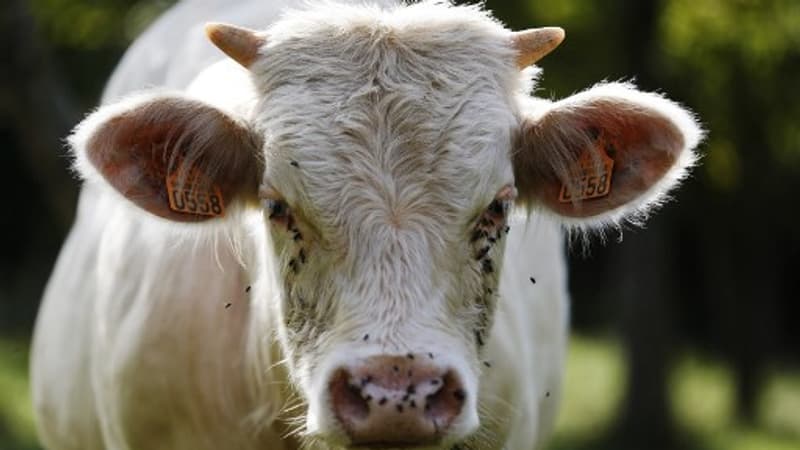In Corsica, the cows will now be equipped with electronic chips. Fraud in European agricultural aid, fictitious cattle, stray cows or cows carrying bovine tuberculosis: faced with these scourges, Corsican cattle will now be equipped with “Bolus”, an inviolable electronic chip that will allow them to be identified.
Among the first volunteers, for this great operation started on December 1 throughout the Mediterranean island, the animals of André Olivesi, in Petreto-Bicchisano (Corse-du-Sud). “It shows the sincerity of our operation. We will see that there is follow-up” and that our herd “exists” well, explains Antoine Olivesi, his brother, referring to court cases of fraud in aid from the Agricultural Common. Policy (PAC) that the island lives.
Guided one by one through a corridor made of logs to immobilize them at the entrance to the meadow, André and Antoine Olivesi’s animals find themselves in front of Jo Galezi, a technician from the Regional Directorate for Food, Agriculture and Forests (Draaf). And this one to put a long metal rod in their throat with, at its end, the chip, arranged in a ceramic cylinder of seven centimeters, which works without a battery.
“It’s a bowling pitcher. It allows us to inject the chip into the animal’s throat by passing it through the side of the mouth,” Julien Ovaert, coordinator of this Bolo project in South Corsica, told AFP. The cylinder then falls “into the rumen, the first stomach of the cow”, and “it will remain there for life, in the animal”, continues the person who will supervise the operation on “some 20,000 cattle spread over 430 farms in Córcega-du -South”.
Painless for the animal
At the moment, only 8% of affected breeders have refused. At the end of October, the Chamber of Agriculture of Upper Corsica and the agricultural union FDSEA 2B criticized the imposition of the bolus, during a press conference, preferring an alternative system, according to them, more reliable and “guarantor of the well-being of an animal “. To ensure correct placement of the chip, Julien Ovaert places a reading stick against the animal’s side.
A “beep” sounds, the device instantly indicates your identification number. Successful operation. Installation took less than 30 seconds per head, to the surprise of the breeder: “It went well. I thought it was going to be much longer and more complicated, but it was fast, it’s a good thing,” said André Olivesi. AFP, watching his bull surrounded by several calves calmly eating fodder.
Corsica “is the only region” of France “where the Bolo will be mandatory to obtain, from October 2023, animal aid” from the CAP, says Pierre Bessin, director of the Draaf de Corse. Painless for the animal, this device is already widely used in Spain and Portugal.
This individual identification of each animal, whose cost (1.7 euros without VAT per animal) and execution are currently fully covered by the State, “will also condition the allocation until 2024 or 2025 of the compensatory allowance for natural disabilities (ICHN ) “, another European agricultural aid. And it will be mandatory to take their animals to the slaughterhouse, told AFP Lia Bastianelli, director of the Bolus project in the Draaf de Corse.
fictional upbringings
This chip “will make fraud and fictitious exploitation very difficult”, he assures, and specifies that “this operation to reidentify the entire Corsican herd” will also allow “the sanitary traceability of the herds, on an island where bovine tuberculosis circulates”. This device will also make it possible to fight against wandering and theft of animals, in particularly extensive Corsican breeding, Lia Bastianelli points out.
Livestock and meat production (cattle, sheep, goats, pigs, chickens) represents 10% of the 256 million euros of agricultural production in Corsica. But, by itself, “the beef sector captures 40% of public aid, and the number of breeders has skyrocketed, from 900 in 2015 to 1,200 today, with production that, however, continues to decline “, underlines in 2021 Sabine Hofferer, former director of Draaf de Corse, who worked on the creation of these Bolus.
Source: BFM TV


